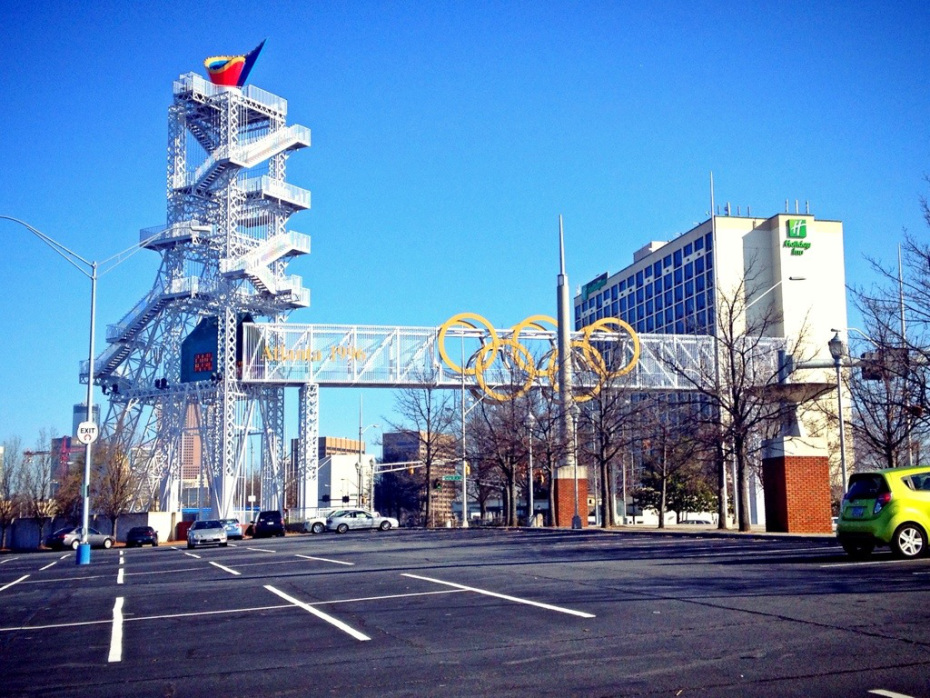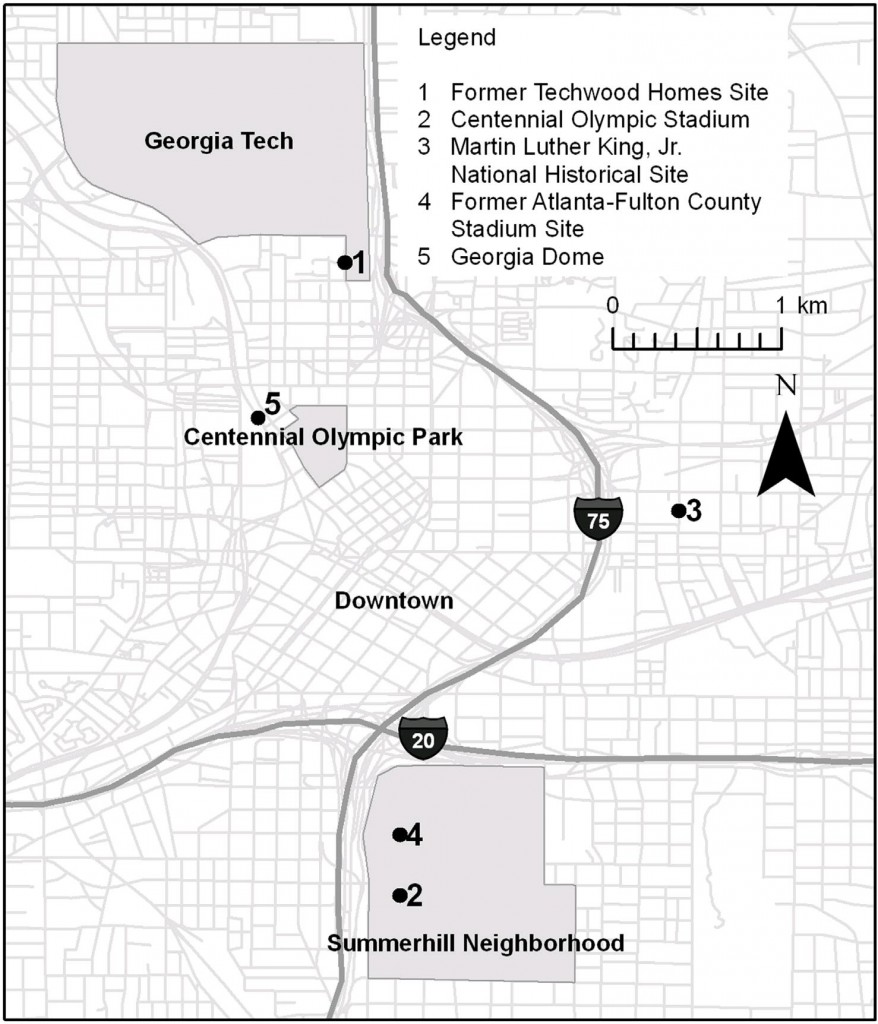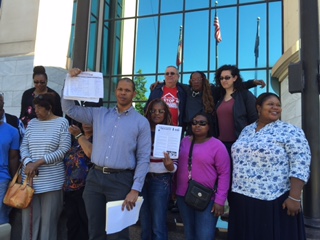It was the 1996 Olympics that promoted the idea of Atlanta as global city. In 1991, Atlanta was named to be the next city to host the 1996 Olympics games chosen by the International Olympic Commission. This was an exciting moment for the city; especially the businessmen. Everyone wanted a share of the Olympic business.
Atlanta had a few years to prepare for the games. This meant there needed to be efficient transportation, tourist attractions, and sports venues. At this time however, Atlanta didn’t have most of those things. The city council had a plan but as Seth Gustafson, a candidate in the department of geography at the University of Georgia, argues “The goal of the Olympic projects, however, was not simply to upgrade old infrastructure with new… Instead, I argue here that the Olympics-related displacement worked to create a particular demographic image of the city, one without the homeless, public housing residents, and other low-income Atlantans who were also predominantly racial minorities. It was only by strategically displacing these residents from Olympic areas of downtown that Atlanta could create an image of itself as a prosperous, authentically global city.”
The construction of Centennial Olympic Stadium, soon to be Turner Field, was a part of this project, making it an architectural product of gentrification. It was constructed next to the Atlanta Fulton County Stadium, in the Summerhill neighborhood, a historically African American neighborhood. It displaced many African American families, pushing them out of the city to other surrounding counties.
After the Olympics, the stadium was renovated to house Atlanta’s professional baseball team, the Atlanta Braves and the Atlanta Fulton County Stadium was torn down and turned into an overflow parking lot.
In 2015, it was announced that new plans were being constructed to convert the same stadium into a football stadium for the nearby public university, Georgia State University. An article written by Nathalie Pozo from FOX 5 stated that on April 17, 2016, there was a meeting where residents of that area came to choose the plan they liked best for the new stadium. Apparently, these recommendations plan to take up much space for the stadium, nearby venders, and parking lots. Another article written by J. Scott Trubey from myAJC, published a statement from President Mark Becker, the President of Georgia State University that said, “He and Georgia State’s development partners are committed to working with the stadium neighborhoods and bringing amenities to the area that fit the neighborhoods’ needs, as well as those of students at the state’s largest university.”
This may seem like a very positive change for Georgia State, its students, and the residents of those neighborhoods but it could also have negative effects on the minorities living nearby. This area around Turner Field is already losing its original residents because of the presence of apartment complexes that are geared toward college students. After the renovation of the stadium, businesses are bound to pop up and take over the area. This will increase property values on homes causing working class families not to be able to afford those homes. This is a very possible negative consequence especially since a 2,000 signature petition from local residents was given to the Atlanta councilwoman Keisha Lance Bottoms’ office, asking for “a community benefits agreement with Georgia State University and its development partners.” This was reported from an article written by Dan Klepal from AJC. This shows that residents of Summerhill neighborhood already has this possibility in mind and want to prevent the negative effects of gentrification from destroying their already crumbling neighborhood.




